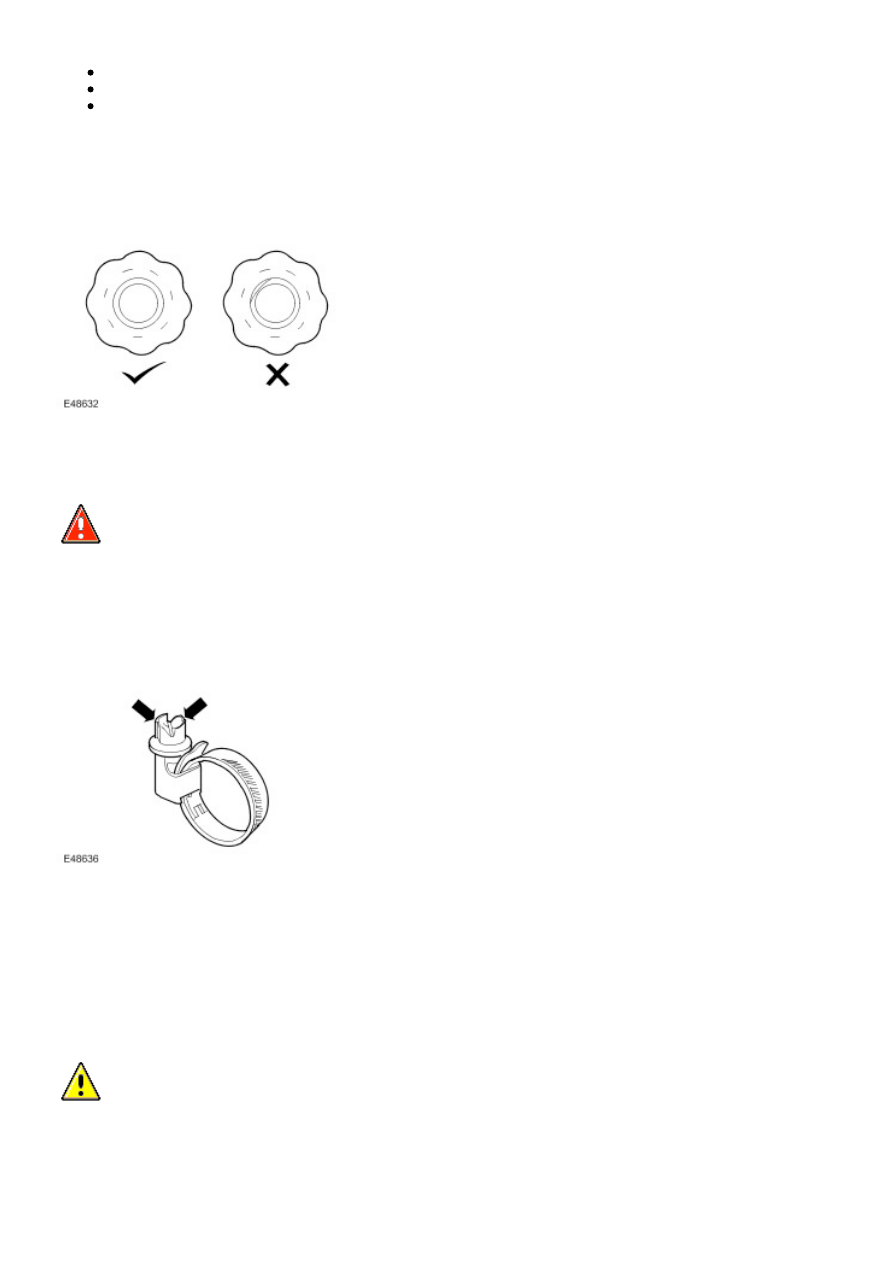Range Rover Sport. Manual - part 3

Fuel system hoses
All fuel hoses are made up of two laminations, an armored rubber outer sleeve and an inner viton core. Whenever a hose is
removed, ensure that the inner bore is inspected to check that the viton lining has not become separated from the outer
sleeve.
WARNING: Never attempt to repair fuel foses or rectify leaking 'quick-fit' connectors the fuel hose and
connectors must be replaced as an assembly.
Fuel system hose clips
Certain fuel system hose clips are of the 'break-off head' type where a slot in the screw head shears off when the clip is
tightened to a specific torque. These clips may be removed using a screwdriver and must be replaced with new clips on
reassembly. Clips must be tightened until the portion of the slot shears off. Do not attempt to tighten clips by any other
method, do not fit any other type of clip.
Cooling system hoses
CAUTION: The following precautions must be observed to ensure that the integrity of the cooling system
hoses and their connection to the system is maintained.